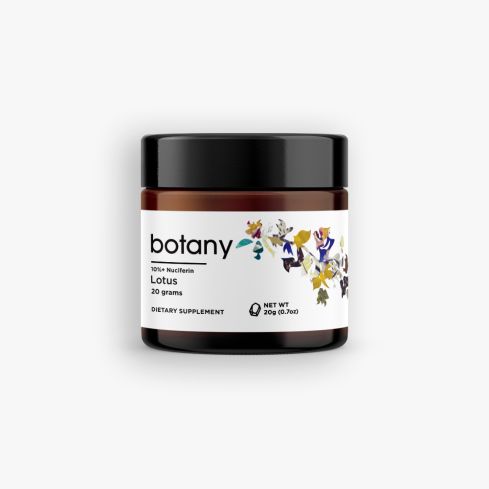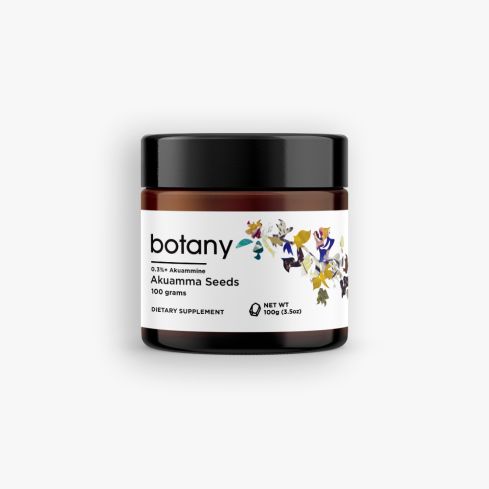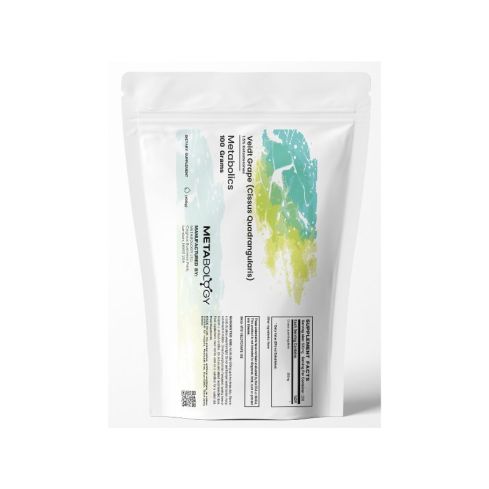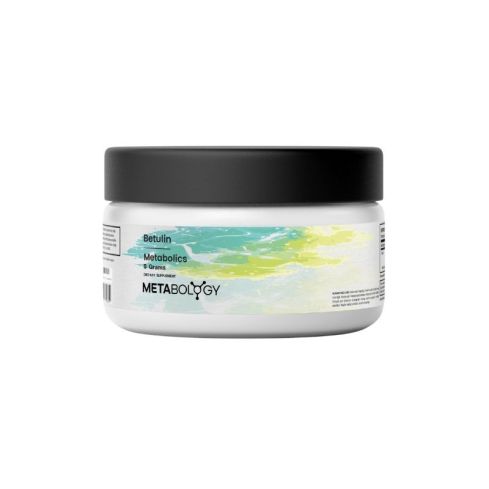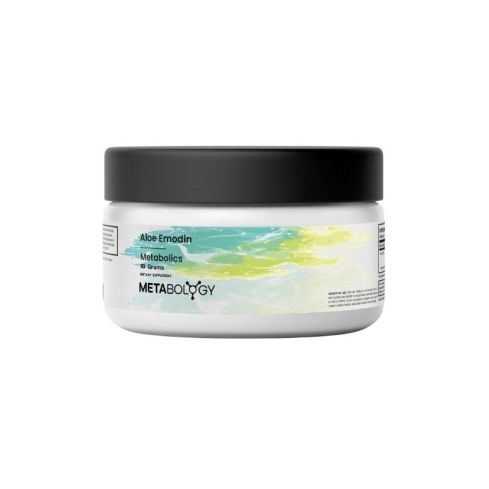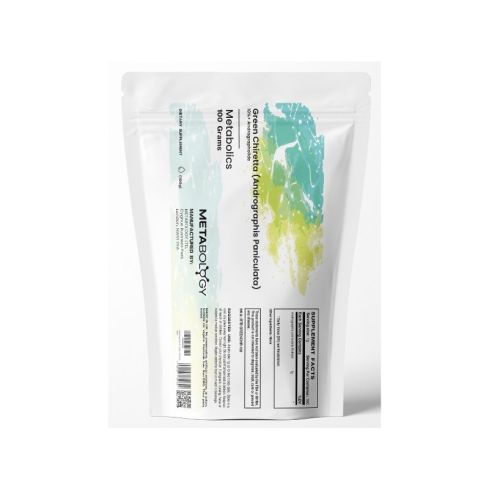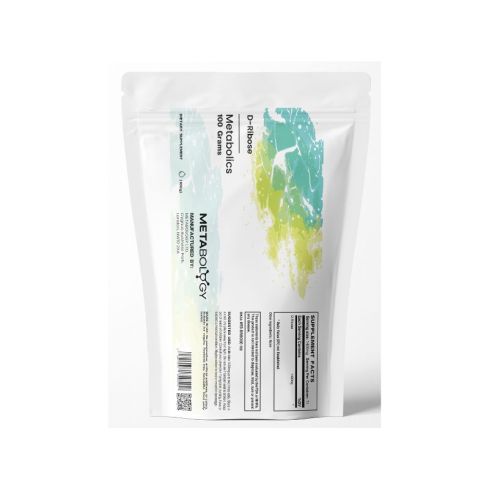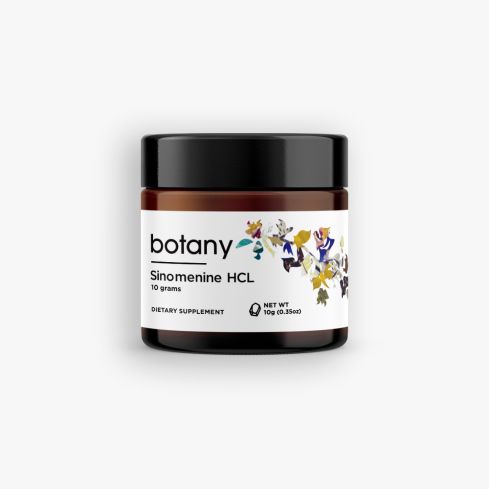Our quality mission is to deliver the highest quality health and wellness products as a leader in the market so that our customers can meet and achieve their life goals.
We focus on our customers’ wants and needs, and we strive for continuous improvement in this Mission by maintaining our core values of: Quality First, People Matter, and Pursuit of Excellence.
Our Quality Control Practices
Receiving and Sampling
When we receive new raw material, we place it in quarantine – a clearly marked area separated from approved raw materials. Materials in this area are only handled by employees who gather samples for testing and cannot be used in production or sent to clients until all testing procedures and documentation is complete.
Any given shipment of raw material can contain several containers of the same product. To be sure all the material is up to our quality standards, samples are taken from every container. A composite sample is then blended from these samples and sent to a third party lab for analysis.
Each sample goes through several tests, including API, Purity and Microbial Testing with external UKAS accredited laboratories. Different products undergo different analyses based on the product’s chemical composition and properties. A product’s specification data sheet discloses which tests are performed and our minimum standards. These specifications are publicly posted for every product on the product listing page. Where UKAS accredited laboratories are unable to provide analysis for more advanced analysis, third party laboratories are directly contracted to undertake laboratory testing in the USA
Transparent Batch & Lot Tracking
To ensure our products are consistent and meet the highest standards of quality, every batch of raw material and every production lot of finished goods is assigned a unique tracking number (LOT #) to identify it during our quarantine, production and post-purchase processes. According to UK labelling regulations, all products will be batch coded with a manufacturing, expiration and production date/time
Where to Find Lab Reports for Your Product
Every LOT number is tied to a Certificate of Analysis (COA) from an independent third party laboratory. Each finished product’s LOT # is visible on the product label. You can find the COAs and lab reports for your product on the product listing, under the section titled Third Party Analysis. Batch Purity reports refer to batches of raw materials which must be correctly identified and quantitated. Potency Audits refer to the concentration of liquid products which will not vary more than ±10% from the posted concentration.
In-house Testing
In addition to third party analysis we conduct in-house analysis with some of the aforementioned techniques as additional confirmation:
Solubility Analysis – Confirmation
Solubility analysis is a technique for quantitatively determining the purity of a substance through the application of precise solubility measurements. At a given temperature, a definite amount of a pure substance is soluble in a definite quantity of solvent.
Melting Point Determination – Confirmation
The melting point of a substance is defined as the temperature range in which the substance undergoes a phase transition from solid to liquid. Any material for which a reputable literature melting point value is established can be tested by examination of its melting point. Melting points are reported as a range; the first value is the temperature at which first melt is observed, and the second value is the temperature at which full melt is achieved.
Organoleptic Analysis – Confirmation
The organoleptic data (visual appearance, texture, smell, taste) of passing raw material is documented for reference. This data is referred to when we conduct an initial inspection of raw material for organoleptic confirmation. It is possible for raw material to pass laboratory analysis and fail to match previous organoleptic data. This is not necessarily a problem, there can be a wide range of difference due to synthesis residuals, extraction or polymorphy. In that case we seek an explanation for why there is a difference to previous data and if necessary submit samples for additional laboratory analysis.
Foreign Materials Inspection – Confirmation
Raw material containers are sifted and inspected for foreign materials. Any powders or liquids found to contain foreign materials are returned to the quarantine area and designated for further analysis.
Microbial Testing - Negative/Positive Colour Indication
It is important when a shelf life test is carried out, that the product is subjected to realistic storage conditions. These storage conditions should reflect those likely to be encountered by the product between manufacture and when it is consumed by the customer. Where microbiological analysis is undertaken to confirm the shelf life, the products should be assessed to ensure pathogenic bacteria (those organisms which cause food poisoning) and spoilage bacteria (bacteria which affect the organoleptic quality) do not rise above acceptable limits.
Metabology's manufacturing facility has in-house testing capabilities using colour significance indication based reagents which allow us to test for over 10 microbial hazards. This allows us to carry out rapid testing and inspection while awaiting third party microbial testing results in-line with our HACCP policies.
3M ATP Luminometer Surface Testing
Metabology utilises 3M's ATP Protein Surface Testing devices in order to monitor, verify and validate cleaning regimes and Standard Operating Procedures in Place. This gains us a numerical value determining any proteins which may be left behind during the pre-cleaning or post cleaning phases of production. With Randomised testing and abilities to map contamination and cleaning products, it allows us to identify weak spots or resistances to cleaning reagents in our facility so that we can take action accordingly.
Third Party Testing
Every batch of every product is sent out for analysis and verified by an independent third party laboratory both quantitatively (purity) and qualitatively (identity) as well as for contaminants. A list of testing techniques we used and a brief explanation of each is listed below:
Metabology utilises a series of the following tests below based on factors such as supplier/manufacturer accreditations such as BRC/ISO2200 or any other GFSI affiliated food safety scheme, HACCP policies provided, organic statuses and other variables in terms of which tests are carried out. Metabology engages Eurofins, Intertek and Campden BRI for all of it's Microbial, Pesticide, Heavy Metal and Allergen Testing. Metabology's testing regimes have been reviewed by ex Environmental Health Officers and leading compliance experts in the Food Industry.
Phase 1 - Microbial Testing - External Testing Policy
|
TESTS |
TARGET |
REPORT |
FREQUENCY |
|
TOTAL VIABLE COUNT |
<10 cfu / g |
>10 * 3 / cfu / g |
Quarantine / Final Product |
|
AEROBIC COLONY COUNT |
<10 cfu / g |
>10 * 3 / cfu / g |
Quarantine / Final Product |
|
CLOSTRIDIA SP. IN 0.1G |
<10 cfu / g |
>10 cfu / g |
Quarantine / Final Product |
|
COLIFORMS |
<10 cfu / g |
>10 cfu / g |
Quarantine / Final Product |
|
E. COLI |
NOT DETECTED |
DETECTED |
Quarantine / Final Product |
|
S.AUREUS (COAGULASE +VE) |
<10 cfu / g |
>10 cfu / g |
Quarantine / Final Product |
|
B.CEREUS |
>10 * 3 - <10 * 4 cfu / g |
<500 cfu/cloth |
Quarantine / Final Product |
|
LISTERIA SSP. IN 25G |
NOT DETECTED |
DETECTED |
Quarantine / Final Product |
|
SALMONELLA SSP. IN 25G |
NOT DETECTED |
DETECTED |
Quarantine / Final Product |
|
YEAST |
<50 cfu / g |
DETECTED |
Quarantine / Final Product |
|
MOULD |
<50 cfu / g |
DETECTED |
Quarantine / Final Product |
|
CAMPYLOBACTER SP. IN 25G |
NOT DETECTED |
DETECTED |
Quarantine / Final Product |
|
ENTEROBACTERIACEAE |
<40 cfu / g |
DETECTED |
Quarantine / Final Product |
Phase 2 - Chemical Limit Testing - External Testing Poilcy
|
TESTS |
TARGET |
REPORT |
FREQUENCY |
|
VISCOSITY |
NMT 3.0MG/KG |
DETECTED |
Quarantine / Final Product |
|
ARSENIC (AS) |
NMT 1.0MG/KG |
DETECTED |
Quarantine / Final Product |
|
LEAD (PB) |
NMT 1.5MG/KG |
DETECTED |
Quarantine / Final Product |
|
CADMIUM (CD) |
NMT 1.0MG/KG |
DETECTED |
Quarantine / Final Product |
|
MERCURY (HG) |
NMT 0.5MG/KG |
DETECTED |
Quarantine / Final Product |
|
CHROMIUM (CR) |
NMT 2.0MG/KG |
DETECTED |
Quarantine / Final Product |
|
HEAVY METALS, AS PB |
NMT 10MG/KG |
DETECTED |
Quarantine / Final Product |
|
SUPHUR DIOXIDE (SO2) |
NMT 10MG/KG |
DETECTED |
Quarantine / Final Product |
|
RESIDUE ON IGNITION (SULPHATED ASH) |
NMT 5.0% W/W |
DETECTED |
Quarantine / Final Product |
|
LOSS ON DRYING |
NMT 3-8% W/W (105’c, 4 hours or constant weight) |
DETECTED |
Quarantine / Final Product |
Phase 3 - Chemical Pesticide Testing - External Testing Policy
|
TESTS |
TARGET |
REPORT |
FREQUENCY |
|
ETHYLENE OXIDE |
0.05mg/kg |
DETECTED |
Quarantine |
|
CHLORATE AND PERCHLORATE |
0.01-0.05MG/LG |
DETECTED |
Quarantine |
|
GLYPHSOATE |
0.1MGK/KG |
DETECTED |
Quarantine |
|
INORGANIC BROMIDE |
10MG/KG |
DETECTED |
Quarantine |
|
DITHIOCARBATES |
0.05-0.1MG/KG |
DETECTED |
Quarantine |
|
PROPYLENETHIOUREA / ETHYLENETHIOUREA |
0.003-0.05MG/KG |
DETECTED |
Quarantine |
|
2,4,5-T, 2,4-D, 2,4-DB, 2,4-DIMETHYLFORMANILIDE, 4-(TRIFLUOROMETHYL)NICOTINOYLGLYCINE, 4-(TRIFLUOROMETHYL)PYRIDINE-3-CARBOXYLIC ACID, 6-BENZYLAMINOPURINE, ABAMECTIN, ACEPHATE, ACETAMIPRID, ACIBENZOLAR-S-METHYL, ACRINATHRIN, ALACHLOR, ALDICARB, ALDICARB SULPHONE, ALDICARB SULPHOXIDE, ALLETHRIN, AMETOCTRADIN, AMIDOSULFURON, AMINOCARB, ASULAM, ATRAZINE, AZAMETHIPHOS, AZINPHOS-ETHYL, AZINPHOS-METHYL, AZOXYSTROBIN, BENDIOCARB, BENTHIAVALICARB-ISOPROPYL, BENZOVINDIFLUPYR, BENZYLDIMETHYLDECYLAMMONIUM CHLORIDE, BENZYLDIMETHYLDODECYLAMMONIUM CHLORIDE, BENZYLDIMETHYLHEXADECYLAMMONIUM CHLORIDE, BENZYLDIMETHYLTETRADECYLAMMONIUM CHLORIDE, BICYCLOPYRONE, BIFENOX, BISPYRIBAC-SODIUM, BITERTANOL, BIXAFEN, BOSCALID, BROMOXYNIL, BROMUCONAZOL, BUPIRIMATE, BUPROFEZIN, BUTACHLOR, BUTOCARBOXIM, BUTOCARBOXIM SULPHOXIDE, BUTOXYCARBOXIM, CADUSAFOS, CARBARYL, CARBENDAZIM, CARBETAMIDE, CARBOFURAN, CARBOFURAN (3-HYDROXY), CARBOXIN, CHLORANTRANILIPROLE, CHLORFENAPYR, CHLORFENVINPHOS, CHLORFLUAZURON, CHLORIDAZON, CHLORTOLURON, CHROMAFENOZIDE, CINIDON-ETHYL, CLETHODIM, CLOFENTEZINE, CLOTHIANIDIN, COUMAPHOS, CRUFOMATE, CYANTRANILIPROLE, CYAZOFAMID, CYCLOXYDIM, CYFLUFENAMID, CYHALOFOP-BUTYL, CYMOXANIL, CYPROCONAZOLE, CYPRODINIL, CYROMAZINE, DEMETON-S-METHYL, DEMETON-S-METHYL SULPHONE, DEMETON-S-METHYL SULPHOXIDE, DESMEDIPHAM, DESMETRYN, DIAFENTHIURON, DICHLORPROP, DICHLORVOS, DICLOBUTRAZOL, DICROTOPHOS, DIDECYLDIMETHYLAMMONIUM CHLORIDE, DIETHOFENCARB, DIFENOCONAZOLE, DIFLUBENZURON, DIMETHOATE, DIMETHOMORPH, DIMOXYSTROBIN, DINICONAZOLE, DINOSEB, DINOTEFURAN, DISULFOTON, DISULFOTON SULPHONE, DISULFOTON SULPHOXIDE, DIURON, DMSA, DODINE, EMAMECTIN BENZOATE, EPOXICONAZOLE, ETHIOFENCARB, ETHIOFENCARB SULPHONE, ETHIOFENCARB SULPHOXIDE, ETHIPROLE, ETHIRIMOL, ETOFENPROX, FAMOXADONE, FENAMIDONE, FENAMIPHOS, FENAMIPHOS SULPHONE, FENAMIPHOS SULPHOXIDE, FENARIMOL, FENBUCONAZOLE, FENBUTATIN OXIDE, FENHEXAMID, FENOPROP, FENOXYCARB, FENPROPIDIN, FENPROPIMORPH, FENPYRAZAMINE, FENPYROXIMATE, FENSULFOTHION, FENSULFOTHION-OXON, FENSULFOTHION-OXON-SULFONE, FENSULFOTHION-SULFONE, FENTHION , FENTHION SULPHONE, FENTHION SULPHOXIDE, FENTIN ACETATE, FIPRONIL, FIPRONIL DE-SULFINYL, FIPRONIL-SULFIDE, FIPRONIL-SULFONE, FLONICAMID, FLORASULAM, FLUAZIFOP (FREE ACID), FLUAZIFOP-P-BUTYL, FLUAZINAM, FLUBENDIAMIDE, FLUCYTHRINATE, FLUDIOXONIL, FLUFENACET, FLUFENOXURON, FLUMETHRIN, FLUOMETURON, FLUOPICOLIDE, FLUOPYRAM, FLUOXASTROBIN, FLUPYRADIFURONE, FLUQUINCONAZOLE, FLUROCHLORIDONE, FLUROXYPYR, FLUSILAZOLE, FLUTRIAFOL, FLUXAPYROXAD, FONOFOS, FORMETANATE-HCL, FOSTHIAZATE, FUBERIDAZOLE, FURATHIOCARB, HALAUXIFEN-METHYL, HALOFENOZIDE, HALOSULFURON-METHYL, HALOXYFOP (FREE ACID), HEPTENOPHOS, HEXACONAZOLE, HEXAFLUMURON, HEXAZINONE, HEXYTHIAZOX, IMAZALIL, IMAZAMOX, IMAZAPIC, IMAZAQUIN, IMAZETHAPYR, IMIDACLOPRID, INDOXACARB, IODOSULFURON-METHYL-SODIUM, IOXYNIL, IPROVALICARB, ISAZOFOS, ISOCARBOFOS, ISOFENPHOS, ISOFENPHOS-METHYL, ISOFLUCYPRAM, ISOPROCARB, ISOPROTHIOLANE, ISOPROTURON, ISOPYRAZAM, ISOXABEN, ISOXAFLUTOLE, KRESOXIM-METHYL, LENACIL, LINURON, LUFENURON, MALAOXON, MANDIPROPAMID, MATRINE, MCPA, MCPB, MECARBAM, MECOPROP, MEFENTRIFLUCONAZOLE, MEPANIPYRIM, MEPHOSFOLAN, MEPRONIL, MESOSULFURON-METHYL, MESOTRIONE, METAFLUMIZONE, METALAXYL, METAMITRON, METAZACHLOR, METCONAZOLE, METHABENZTHIAZURON, METHAMIDOPHOS, METHIOCARB , METHIOCARB SULFOXIDE, METHIOCARB SULPHONE, METHOMYL, METHOXYFENOZIDE, METOBROMURON, METOLACHLOR, METOLCARB, METOSULAM, METOXURON, METRAFENONE, METRIBUZIN, METSULFURON-METHYL, MEVINPHOS, MOLINATE, MONOCROTOPHOS, MONOLINURON, MONURON, MYCLOBUTANIL, N-2,4-DIMETHYLPHENYL-N`-METHYLFORMAMIDINE, NAPROPAMIDE, NEBURON, NICOSULFURON, NITENPYRAM, NOVALURON, NUARIMOL, OFURACE, OMETHOATE, OXADIARGYL, OXADIAZON, OXADIXYL, OXAMYL, OXASULFURON, OXYMATRINE, PACLOBUTRAZOL, PARAOXON-METHYL, PENCONAZOLE, PENCYCURON, PENFLUFEN, PENTACHLOROPHENOL, PENTHIOPYRAD, PHENMEDIPHAM, PHENTHOATE, PHORATE , PHORATE SULPHONE, PHORATE SULPHOXIDE, PHOSALONE, PHOSMET, PHOSPHAMIDON, PHOXIM, PICLORAM, PICOLINAFEN, PICOXYSTROBIN, PIPERONYL BUTOXIDE, PIRIMICARB, PIRIMICARB-DESMETHYL, PROCHLORAZ, PROCHLORAZ METAB (BTS 40348), PROCHLORAZ METAB (BTS 44595), PROCHLORAZ METAB (BTS 44596), PROFENOFOS, PROMECARB, PROMETRYN, PROPAMOCARB (FREE BASE), PROPAQUIZAFOP, PROPARGITE, PROPETAMPHOS, PROPHAM, PROPICONAZOLE, PROPOXUR, PROPYZAMIDE, PROQUINAZID, PROSULFURON, PROTHIOCONAZOLE-DESTHIO, PYDIFLUMETOFEN, PYMETROZINE, PYRACLOSTROBIN, PYRAFLUFEN-ETHYL, PYRAZOPHOS, PYRETHRINS TECH, PYRIDALYL, PYRIFENOX, PYRIMETHANIL, PYRIPROXYFEN, PYROXSULAM, QUASSIA, QUINMERAC, QUINOCLAMINE, QUINOXYFEN, QUIZALOFOP-P, RIMSULFURON, ROTENONE, SAFLUFENACIL, SIMAZINE, SPINETORAM, SPINOSAD, SPIROMESIFEN, SPIROTETRAMAT, SPIROTETRAMAT-ENOL, SPIROTETRAMAT-KETO-HYDROXY, SPIROXAMINE, SULCOTRIONE, SULFOXAFLOR, TEBUCONAZOLE, TEBUFENOZIDE, TEBUFENPYRAD, TEBUPIRIMFOS, TEBUTHIURON, TEFLUBENZURON, TEPRALOXYDIM, TERBACIL, TERBUFOS, TERBUFOS SULFONE, TERBUFOS SULFOXIDE, TERBUMETON, TERBUTHYLAZINE, TERBUTRYN, TETRACONAZOLE, TETRAMETHRIN, THIABENDAZOLE, THIACLOPRID, THIAMETHOXAM, THIODICARB, THIOPHANATE-METHYL, TOLFENPYRAD, TRIADIMEFON, TRIADIMENOL, TRIALLATE, TRIASULFURON, TRIAZOPHOS, TRICLOPYR, TRICYCLAZOLE, TRIFLOXYSTROBIN, TRIFLUMIZOLE, TRIFLUMURON, TRIFLUSULFURON-METHYL, TRIFORINE, TRITICONAZOLE, TRITOSULFURON, VAMIDOTHION, ZOXAMIDE |
0.01MG/KG |
DETECTED |
Quarantine |
|
2-PHENYLPHENOL, ACETOCHLOR, ACLONIFEN, ALDRIN, BENALAXYL, BIFENTHRIN, BIPHENYL, BROMOPHOS-ETHYL, BROMOPROPYLATE, CARFENTRAZONE-ETHYL, CHLORBUFAM, CHLORDANE (CIS), CHLORDANE (TRANS), CHLOROBENZILATE, CHLOROTHALONIL, CHLORPROPHAM, CHLORPYRIFOS, CHLORPYRIFOS-METHYL, CHLORTHAL-DIMETHYL, CHLOZOLINATE, CLOMAZONE, CYANAZINE, CYCLOATE, CYFLUTHRIN, CYHALOTHRIN-LAMBDA, CYPERMETHRIN, DDD-PP, DDE-PP, DDT-OP, DDT-PP, DELTAMETHRIN, DIAZINON, DICHLOBENIL, DICHLOFLUANID, DICLORAN, DICOFOL, DIELDRIN, DIFLUFENICAN, DIMETHENAMID, DIPHENYLAMINE, ENDOSULFAN (I), ENDOSULFAN (II), ENDOSULFAN-SULPHATE, ENDRIN, EPN, EPTC, ETHION, ETHOFUMESATE, ETHOPROPHOS, ETOXAZOLE, ETRIDIAZOLE, ETRIMFOS, FENAZAQUIN, FENITROTHION, FENPROPATHRIN, FENVALERATE, FLUTOLANIL, FLUVALINATE, FURALAXYL, HCH-ALPHA, HCH-BETA, HCH-DELTA, HCH-GAMMA, HEPTACHLOR, HEPTACHLOR EPOXIDE (CIS), HEPTACHLOR EPOXIDE (TRANS), HEXACHLOROBENZENE, IPRODIONE, MALATHION, METHACRIFOS, METHIDATHION, METHOXYCHLOR, NITROFEN, NITROTHAL-ISOPROPYL, OXYCHLORDANE, OXYFLUORFEN, PARATHION-ETHYL, PARATHION-METHYL, PENDIMETHALIN, PENTACHLOROANALINE, PENTANOCHLOR, PERMETHRIN, PHTHALIMIDE, PIRIMIPHOS-ETHYL, PIRIMIPHOS-METHYL, PROCYMIDONE, PROPACHLOR, PROSULFOCARB, PROTHIOFOS, PYRIDABEN, PYRIDAPHENTHION, QUINALPHOS, QUINTOZENE, SPIRODICLOFEN, TECNAZENE, TEFLUTHRIN, TETRACHLORVINPHOS, TETRADIFON, TETRAHYDROPHTHALIMIDE, TOLCLOFOS-METHYL, TOLYLFLUANID, TRIFLURALIN, VINCLOZOLIN |
0.01MG/KG |
DETECTED |
Quarantine |
Phase 4 - Allergen Testing - External Testing Policy
|
TESTS |
TARGET |
REPORT |
FREQUENCY |
|
ALMOND (TREE NUTS) , HAZELNUT (TREE NUTS) , WALNUT (TREE NUTS) |
DETECTED |
DETECTED |
Quarantine / Final Product |
|
WHOLE EGG PROTEIN, SOYA PROTEIN |
DETECTED |
DETECTED |
Quarantine / Final Product |
|
GLUTEN |
<20 MG/KG |
>20 MG/KG |
Quarantine / Final Product |
|
PEANUT, SESAME, MUSTARD, CRUSTACEANS |
DETECTED |
DETECTED |
Quarantine / Final Product |
HPLC – Purity & Identification
High Performance Liquid Chromatography (HPLC) is the method by which most products are tested for purity. This method is utilized when there is a single molecule or class of molecules that can be assayed for. HPLC relies on pumps to pass a pressurized liquid and a sample mixture through a column filled with adsorbent, leading to the separation of the sample components based on the strength of their attraction to the adsorbent, after which they are analyzed by shining light on the separate sample components as they come off the column.
Most organic compounds absorb a certain amount of light, so as they pass by the applied light beam, a detector can pick up how much light is absorbed. The detector also records the components’ retention time based on the order in which they come off the column. This output can then be analyzed based on peak area to determine the exact nature of the sample’s components or fed into another analytical machine for additional analysis as in the case of LC-MS.
NMR Spectroscopy – Structure & Identification
Nuclear Magnetic Resonance Spectroscopy (NMR) is a spectroscopic technique to observe local magnetic fields around atomic nuclei. As the fields are unique or highly characteristic to individual compounds, in modern organic chemistry practice, NMR spectroscopy is the definitive method to identify monomolecular organic compounds.
Samples are placed in a magnetic field and the NMR signal is produced by excitation of the nuclei sample with radio waves into nuclear magnetic resonance, which is detected with sensitive radio receivers. The intramolecular magnetic field around an atom in a molecule changes the resonance frequency, thus giving access to details of the electronic structure of a molecule and its individual functional groups.
TLC – Purity & Identification
Thin-Layer Chromatography (TLC) is a chromatography technique used to separate non-volatile mixtures. We use this method for plant extracts made up of many different compounds. TLC is essentially a rudimentary 2-dimensional flash chromatography, except the mobile phase travels up a plate via capillary action instead of down a column. TLC is performed on a sheet of glass, plastic, or aluminium foil, which is coated with a thin layer of adsorbent material, usually silica gel, aluminium oxide (alumina), or cellulose. This layer of adsorbent is known as the stationary phase.
Thin-layer chromatography can be used to monitor the progress of a reaction, identify compounds present in a given mixture, and determine the purity of a substance.
ICP-MS – Heavy Metal Testing
Inductively Coupled Plasma Mass Spectrometry (ICP-MS) is a type of mass spectrometry which is capable of detecting metals and several non-metals at concentrations as low as one part in 1015 (part per quadrillion, ppq) on non-interfered low-background isotopes. This is achieved by ionizing the sample with inductively coupled plasma and then using a mass spectrometer to separate and quantify those ions. We use this technique to test for toxic heavy metal contamination. All products undergo this test, specifically for arsenic, cadmium, mercury, and lead.
Microbiology Panel – Contaminant Testing
The microbiology panel involves ensuring products are below acceptable limits for common and dangerous microbes by culturing samples with growth media for pathogenic species. All products that are extracts of biological entities undergo this panel. The tests included in the panel are the Total Aerobic Plate Count, Yeast; Mold Count, E. Coli presence, S. Aureus presence, and Salmonella presence.
GC-MS – Contaminant Testing
Gas chromatography–mass spectrometry (GC-MS) is an analytical method that combines the features of gas-chromatography and mass spectrometry to identify different substances within a mixed test sample. Applications of GC-MS include drug detection, fire investigation, environmental analysis, explosives investigation, and identification of unknown samples. GC-MS has been regarded as a “gold standard” for forensic substance identification because it is used to perform a 100% specific test, which positively identifies the presence of a particular substance. A nonspecific test merely indicates that any of several in a category of substances is present. Although a nonspecific test could statistically suggest the identity of the substance, this could lead to false positive identification.
We use GC-MS to test for residual solvents, pesticides and other contaminants in plant extracts.
Other Testing
Some products are difficult or impossible to test with the aforementioned methods. In these cases, alternative methods must be used. Those methods can include:
Thermogravimetric Analysis – Purity
Thermogravimetric analysis (TGA) is a method of thermal analysis in which the mass of a sample is measured over time as the temperature changes. This measurement provides information about physical phenomena, such as phase transitions, absorption, adsorption and desorption; as well as chemical phenomena including chemisorptions, thermal decomposition, and solid-gas reactions (e.g., oxidation or reduction).
UV-Vis Spectroscopy – Identification & Purity
Ultraviolet–Visible Spectroscopy (UV-Vis) refers to absorption spectroscopy or reflectance spectroscopy in the ultraviolet-visible spectral region. This means it uses light in the visible and adjacent UV ranges. A beam of light is passed through a solution containing the analyte, and the transmitted wavelengths and intensities are used to measure how much of the light is absorbed and thus calculate the composition of the sample.
FTIR Spectroscopy – Identification & Purity
The goal of any absorption spectroscopy (FTIR, ultraviolet-visible (“UV-Vis”) spectroscopy, etc.) is to measure how well a sample absorbs light at each wavelength. The most straightforward way to do this, the “dispersive spectroscopy” technique, is to shine a monochromatic light beam at a sample, measure how much of the light is absorbed, and repeat for each different wavelength.
Fourier-Transform Infrared Spectroscopy (FTIR) is a technique used to obtain an infrared spectrum of absorption or emission of a solid, liquid or gas. An FTIR spectrometer simultaneously collects high-spectral-resolution data over a wide spectral range. This confers a significant advantage over a dispersive spectrometer, which measures intensity over a narrow range of wavelengths at a time.
The term Fourier-transform infrared spectroscopy originates from the fact that a Fourier transform (a mathematical process) is required to convert the raw data into the actual spectrum.
Titration – Purity
Titration, also known as titrimetry, is a common laboratory method of quantitative chemical analysis that is used to determine the concentration of an identified analyte. Since volume measurements play a key role in titration, it is also known as volumetric analysis. A reagent, called the titrant or titrator is prepared as a standard solution. A known concentration and volume of titrant reacts with a solution of analyte or titrand to determine concentration.
Put more plainly, a known reagent is mixed with a solution containing the analyte, and the physical change that follows is interpreted by the chemist as indicative of composition.
Reviewing Third Party Analysis Results
After the third party test results are received, the documents are compared against the specifications for the material and deemed as pass or fail. Any material which fails to meet any specification is subject to further third party testing. The material will be rejected if one or more specifications fail the additional testing. We will attempt to return the material to our vendor, or if that is not possible we will discard it. If the material passes all specifications, then we complete the in-house testing process.
Final Review & Release
After all testing is complete we review results one last time for completeness and accuracy before releasing the material from quarantine. Every raw material must pass all relevant tests within designated specifications in order for the material to be used in production. After a material passes these tests, we generate a COA for the batch and move it to production. A raw material cannot be used in production until a COA is generated.
Our Quality Control Policy
It is our policy to assist every person in achieving their health and performance goals by consistently delivering the finest quality supplements that not only meet but exceed our customers’ expectations.
Quality Mission Statement
Management will continuously review its efforts to exceed our customers’ expectations with an emphasis on making sure every aspect of the company exhibits a commitment to the Quality Policy.
This commitment will be maintained through:
- Purchase of the highest quality ingredients from our suppliers
- Appropriate testing of each product through reputable third party labs and in-house testing
- Superior customer service
- Continuous improvement of processes and procedures
- Honesty and integrity in our marketing


